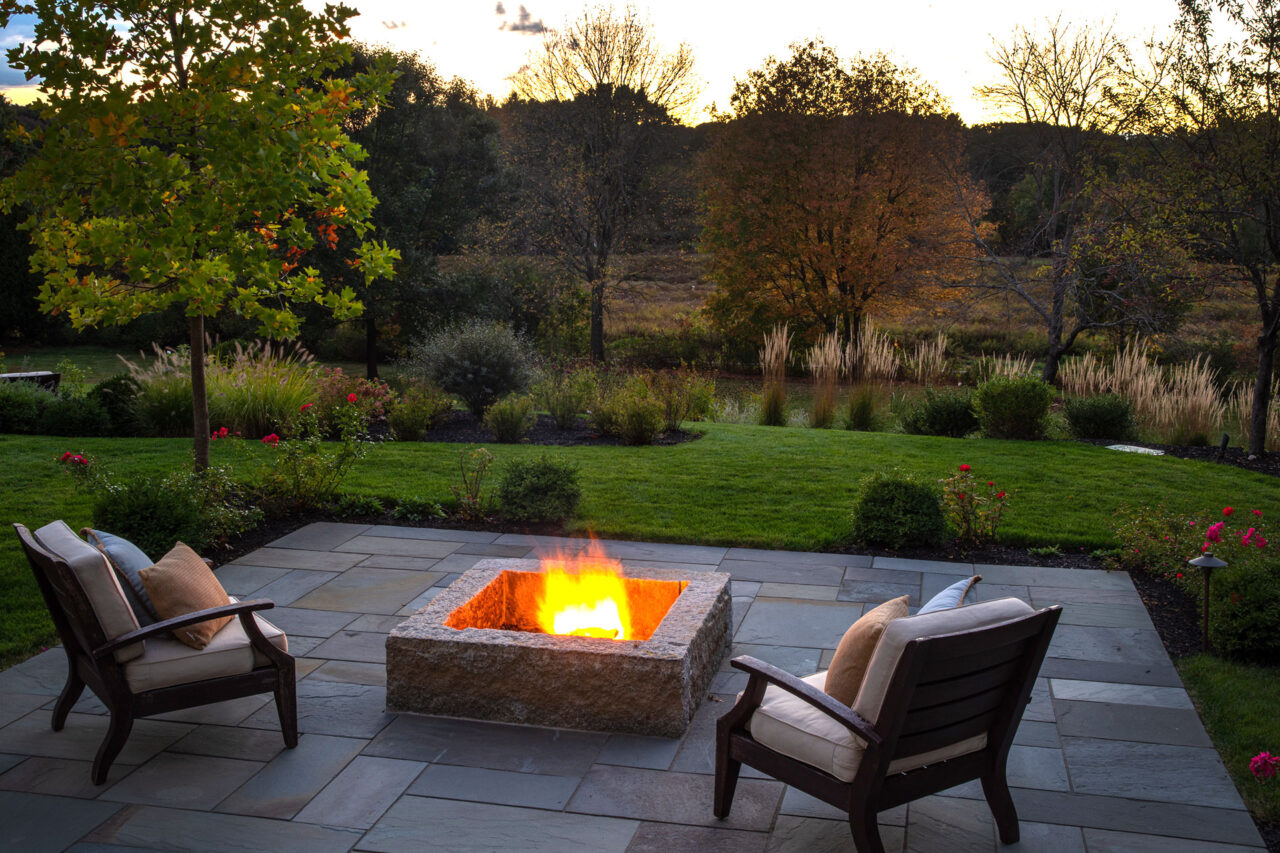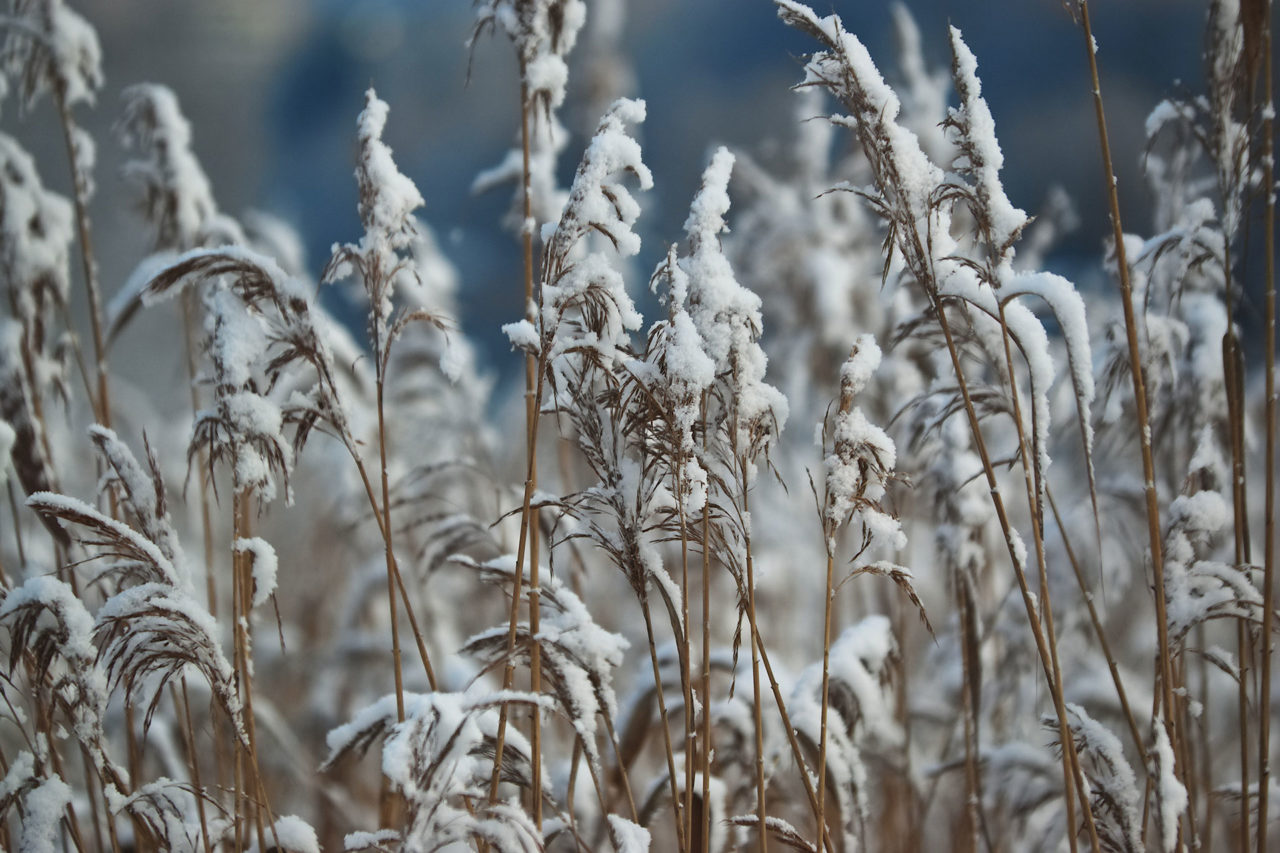Your Guide to a Low-Maintenance Landscape That Thrives in Every Season
Many homeowners in Greater Boston dream of a lush, sophisticated landscape—colorful plantings, graceful trees, and stonework that elevates their property through every season. What they don’t dream about is the constant maintenance: mowing, pruning, watering, weeding, and replacing plants that fail to survive our unpredictable New England weather.
The good news? You can absolutely have a stunning landscape that looks polished all year without constant upkeep. Designing a low-maintenance garden isn’t about compromise—it’s about smart planning. When every choice, from hardscape layout to plant selection, is tailored to Boston’s climate and soil, the result is a landscape that thrives naturally. Even better, it saves you money over time by reducing labor, water use, and replacement costs.
Key Takeaways
- Build a low-maintenance landscape that works with New England’s climate. The right grading, drainage, and native plants mean less work—and a yard that thrives year-round.
- Quality materials and thoughtful design pay for themselves. You’ll spend less time and money on upkeep while enjoying a property that looks great in every season.
- Durable hardscape, evergreens, and smart irrigation create a landscape that stays elegant, sustainable, and effortless—no matter what Boston weather delivers.
Why Low-Maintenance Design Matters in Boston
Greater Boston’s growing conditions can be challenging. Cold winters, humid summers, and dramatic freeze-thaw cycles put strain on both plants and materials. Urban soils are often compacted, while suburban sites deal with rocky glacial loam, salt exposure, and drainage problems.
A landscape designed without regard to these realities demands constant intervention. But when a property is planned with Boston’s environment in mind—through proper grading, durable hardscape, healthy soils, and resilient plants—maintenance needs drop dramatically. Drainage systems prevent erosion, native species resist disease, and thoughtfully placed evergreens provide structure even under snow.
The result is a landscape that performs beautifully year after year, with less effort and lower costs. Many of our clients see a 30–50% reduction in maintenance hours within the first few years after redesign.
Building the Foundation: Structure and Plant Selection
A low-maintenance design starts with structure. Hardscape elements such as patios, walkways, and stone walls form the architectural framework of a property. These materials are durable, weather-resistant, and require minimal care compared to turf or garden beds. At a Blade of Grass, we often use granite, bluestone, and permeable pavers for their timeless appearance and long-term performance in New England’s climate.
Once the hardscape is in place, the planting plan brings life and texture to the design. Choosing native or regionally adapted plants is key. Shrubs like inkberry, viburnum, and witch-hazel handle New England’s winters with ease. Native perennials such as coneflower, daylily, and asters provide seasonal color and pollinator support with minimal maintenance. Ornamental grasses and evergreen groundcovers help suppress weeds and create visual rhythm without constant pruning.
When plants are grouped by sunlight and moisture needs, they thrive naturally. The garden works with its environment rather than against it. For more inspiration, visit Grow Native Massachusetts’ plant lists or the UMass Extension guide to low-maintenance trees and shrubs.
Soil, Irrigation, and Smart Systems
Healthy soil is the foundation of every low-maintenance landscape. In the Boston area, where soils can be compacted or poorly drained, adding compost and organic matter before planting helps plants establish deeper roots and tolerate both drought and heavy rain.
Modern irrigation systems can simplify care even further. Drip irrigation and smart controllers deliver water precisely where it’s needed and automatically adjust for weather conditions. Mulching garden beds conserves moisture, reduces weeds, and stabilizes soil temperatures throughout the freeze-thaw cycles typical of Massachusetts winters.
At a Blade of Grass, we pair sustainable irrigation practices with eco-friendly maintenance, helping clients protect their investment while keeping water usage low.
Designing for Boston’s Four Seasons
One of the greatest challenges—and joys—of landscaping in New England is creating beauty through all four seasons. A thoughtful mix of structure, texture, and seasonal interest ensures that your property looks its best whether it’s July or January.
In spring, early blooms from bulbs, magnolia, and serviceberry create a sense of renewal. By summer, lush perennials and grasses take over, framed by the architectural forms of shrubs and hedges. Autumn brings deep color from maples and viburnums, while winter highlights evergreens, ornamental bark, and stonework.
Designing for all seasons reduces the need for frequent replanting or temporary décor. Your property remains visually engaging and well-balanced every month of the year. For guidance on Massachusetts-appropriate species, see Mass Audubon’s native plant recommendations.
The Financial Benefits of Low-Maintenance Design
While the initial investment in a well-designed, low-maintenance landscape may be higher, the long-term payoff is significant. Fewer replacements, less fertilizer, lower water bills, and reduced labor all add up.
According to the U.S. Department of Energy, mature trees can lower surrounding air temperatures by as much as nine degrees and cut home cooling costs by 25%. In a dense metro area like Boston, that energy efficiency also boosts property value.
At a Blade of Grass, we’ve seen homeowners achieve a better return on investment by focusing on durability and natural performance rather than short-term aesthetics. A low-maintenance landscape grows more beautiful—and more valuable—with time.
Frequently Asked Questions from Boston Homeowners
Q: Does “low-maintenance” mean boring?
A: Not at all. The best low-maintenance gardens rely on texture, structure, and seasonal layering instead of constant color changes. They’re rich and refined rather than sparse.
Q: Will I still need to water and prune?
A: Yes—but much less. Smart irrigation and resilient plant selection reduce both frequency and effort. Maintenance shifts from constant work to strategic, seasonal care.
Q: How do I manage snow and ice?
A: Choose materials like granite or permeable pavers that resist frost heave, and position plantings to shed snow naturally. Proper grading and drainage also protect your investment.
Q: Is it more expensive upfront?
A: Usually. But over time, you’ll spend less on repairs, replacements, and ongoing care. It’s an investment that pays you back every season.
Learn More
To explore low-maintenance design further, we recommend these trusted and live external resources:
UMass Extension – Trees, Shrubs, and Vines for Low-Maintenance Landscapes
Grow Native Massachusetts – Plant Lists & Landscape Guides
Each provides plant recommendations, design strategies, and region-specific maintenance guidance to complement our approach.
Conclusion: Smarter Landscapes, Greater Rewards
Creating a low-maintenance, year-round landscape in Greater Boston isn’t about cutting corners—it’s about designing intelligently. When soil health, plant choice, and hardscape planning align with the natural rhythms of New England, you get a property that’s as easy to care for as it is beautiful.
If you’re ready to simplify your landscape while elevating your property’s appeal, contact the a Blade of Grass team for a free consultation. Our award-winning designers specialize in creating timeless, low-maintenance outdoor spaces that thrive through every season.


